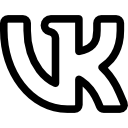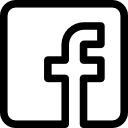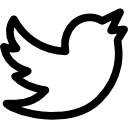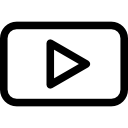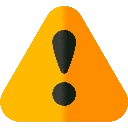surgery for appendicitis. The nurse realizes the client may be unprepared to learn if the client 3. A client comes to the emergency department reporting that he has had diarrhea for 4 days and is urinating less than usual. When assessing the client’s skin turgor, the nurse should 4. A nurse is planning interventions for a group of clients who are obese. What can the nurse do to improve their commitment to a long term goal of weight loss? When admitting a client, the nurse records which information in the client’s record first? 5. A nurse tells a client that the provider has prescribed IV fluids. The client appears to be upset about the IV catheter insertion, but says nothing to the nurse. Which of the following of the following is an appropriate nursing response? 6. A client who is unstable and requires frequent vital signs has an electronic blood pressure machine automatically measuring his blood pressure every 15 min. However, the machine is reading the client’s blood pressure at more frequent intervals, and the readings are not similar. The nurse checks the machine settings and observes the additional readings, but the problem continues. Which of the following is the appropriate nursing action? 7. A nurse is caring for a client just diagnosed with type 1 diabetes mellitus. The client is resistant to learning self injection of insulin and asks the nurse to administer all the injections. The nurse explains the importance of learning self care and appropriately adds which of the following statements? 8. An assistive personnel (AP) says to the nurse, "This client is incontinent of stool three or four times a day. I get angry, and I think that the client is doing it just to get attention. I think we should put adult diapers on her." Which is the appropriate nursing response? A nurse’s neighbor is scheduled for elective surgery. The neighbor’s provider indicated that a moderate amount of blood loss is expected during the surgery, and the neighbor is 9. anxious about acquiring an infection from a blood transfusion. Which of the following is appropriate for the nurse to suggest? 10. At a mobile screening clinic, a nurse is assessing a client who reports a history of a heart murmur due to aortic stenosis. To auscultate the aortic valve, the nurse should place the stethoscope at which location? 11. A client is admitted to the hospital with decreased circulation in the left leg. During the admission assessment, which is the most important nursing action initially? 12. A nurse is caring for a client who requires rectal temperature monitoring. Available at the client's bedside is a thermometer is with a long, slender tip. Which of the following is the appropriate action for the nurse to take? 13. A nurse is teaching a client who has cardiovascular disease how to reduce his intake of sodium and cholesterol. The nurse understands that the most significant factor in planning dietary changes for this client is the 14. A nurse is caring for an older adult client who is confused and continually grabs at the nurses. Which of the following is an nursing action? 15. An assistive personnel (AP) tells the nurse, "I am unable to find a large blood pressure cuff for a client who is obese. Can I just use the regular cuff if I can get it to stay on?" The nurse replies that taking the blood pressure of a morbidly obese client with a regular blood pressure cuff will result in a reading that is 16. Which of the following should the nurse do first when preparing to provide tracheostomy care? 17. A 3-year-old child has had multiple tooth extractions while under general anesthesia. The client returns from the post anesthesia care crying, but awake, from the recovery room. Which approach is likely to be successful? 18. A nurse admits a client to a same-day surgery center for an exploratory laparotomy procedure this morning. The client’s surgeon asks the nurse to witness the signing of the preoperative consent form. In signing the form as a witness, the nurse affirms that 19. To use proper body mechanics while making an occupied bed for a client on bed rest, the nurse should 20. Which of the following should a group of community health nurses plan as part of a primary prevention program for occupational pulmonary diseases? 21. When initiating cardiopulmonary resuscitation (CPR), the nurse must confirm which of the following assessment findings prior to beginning chest compressions? 22. A nurse on a rehabilitation unit is transferring a client from a bed to a chair. To avoid a back injury, which of the following techniques should the nurse use? 23. An older adult client appears agitated when the nurse requests that the client’s dentures be removed prior to surgery and states, "I never go anywhere without my teeth." Which of the following is an appropriate nursing response? To use the nursing process correctly, the nurse must first 24. A postoperative client has been diagnosed with paralytic ileus. When performing auscultation of the client's abdomen, the nurse expects the bowel sounds to be 25. While starting an intravenous infusion (IV) for a client, the nurse notices that her gloved hands get spotted with blood. The client has not been diagnosed with any infection transmitted via the bloodstream. Which of the following should the nurse do as soon as the task is completed? 26. A nurse is precepting a newly licensed nurse who is preparing to help a client perform tracheostomy care. The nurse should intervene if the equipment the preceptee gathered included 27. A nurse is caring for a client diagnosed with a terminal illness. The client asks several questions about the nurse’s religious beliefs related to death and dying. An appropriate nursing response is to 28. When assessing a client’s heart sounds, the nurse hears a scratching sound during both systole and diastole. These sounds become more distinct when the nurse has the client sit up and lean forward. The nurse should document the presence of a(n) 29. A client admitted with abdominal pain tells the nurse that her father died recently, and she begins crying while talking about him. The nurse determines that the client’s temperature is 39.2° C (102.6° F), her abdomen is soft without tenderness, and her menses is overdue by 2 days. To which observation should the nurse give priority attention? 30. At the surgical scrub sink, a surgical nurse demonstrates the proper surgical handwashing technique by scrubbing 31. A client scheduled for a hysterectomy has not yet signed the operative consent form. When the nurse approaches the client and asks that she review and sign the form, the client says she no longer wants to have the surgery. At this time, which action should the nurse take? 32. A nurse prepares to admit a client who is immediately postoperative to the unit following abdominal surgery. When transferring the client from the gurney to the bed, the nurse should 33. A client is admitted to the hospital in the terminal stage of cancer. The nurse enters the client’s room to administer medications and finds the client crying. The appropriate nursing action is to 34. A nurse is performing an abdominal assessment of an adult client. Identify the correct sequence of steps used for this assessment. 35. While measuring a client's vital signs, the nurse notices an irregularity in the heart rate. Which nursing action is appropriate? 36. A nurse is caring for a client who has hypertension. Which approach is the priority when the nurse is measuring the client's blood pressure? 37. A hospitalized client needs a chest x ray. The radiology department calls the nursing unit and says that they are sending a transporter for the client. When entering the client’s room, the priority action is to 38. An older adult client just diagnosed with colon cancer asks the nurse what the primary care provider is going to do. The provider will be making rounds within the hour. Which of the following nursing actions is appropriate? 39. A nurse is teaching a client with a new colostomy about how to irrigate the ostomy. The nurse realizes that the client needs further teaching when the client When replacing a client's surgical dressing, the nurse should 40. When a nurse makes an initial assessment of a client who is postoperative following a gastric resection, the client’s nasogastric tube is not draining. The nurse's attempt to irrigate the tube with 10 mL of 0.9% sodium chloride is unsuccessful, so she determines that the tube is obstructed. Which of the following actions should the nurse take? 41. A client returning from the surgical suite following a vaginal hysterectomy is awake and asking for something to drink. her postoperative diet prescription reads: Clear liquids; advance diet as tolerated. Which of the following is appropriate for the nurse to tell the client? 42. The mother of a toddler calls to the nurse, "Help! My baby is choking on his food." The nurse determines that the Heimlich maneuver is necessary based on which finding? 43. A nurse is caring for a client who is 3 days postoperative following a cholecystectomy. The nurse suspects a wound infection because the drainage on the dressing is yellow and thick. The nurse identifies this type of drainage as 44. A nurse is caring for a client who has a new prescription for tube feeding. The nurse understands that the provider prescribed tube feeding because the client 45. A nurse takes an older adult client who has dysphagia following a cerebrovascular accident (CVA) to the dining room for dinner. When assisting the client at mealtime, the nurse should 46. A nurse is collecting a urine specimen for a client to test via urine dipstick the urine's specific gravity. The nurse knows the result will indicate the amount of While changing the linen on a client’s bed, the nurse should 47. Which nursing action prevents injury to a client's eye during the administration of eye drops? 48. A client returns from surgery with two Penrose drains in place. Anticipating frequent dressing changes, what should the nurse use around the incision area? 49. A nurse is performing an eye irrigation for a client who has been exposed to smoke and ash. Which of the following nursing actions should receive the highest priority during the irrigation? 50. A client develops a fecal impaction. Before digital removal of the mass, which type of enema should the nurse give to loosen the feces? When communicating with a client who is hearing impaired the nurse should 51. Cardiopulmonary resuscitation (CPR) has been initiated for a client in the emergency room. The nurse understands that a critical concept related to effective cardiac (chest) compressions is the need to 52. A client is admitted for evaluation and control of hypertension. Several hours after the client’s admission, the nurse discovers the client supine on the floor, unresponsive to verbal or painful stimuli. The nurse’s first action at this time should be to When ambulating a frail, older adult client, the nurse should 53. A nurse is caring for a client who is incontinent of loose stool and is reporting a painful perineum. Which of the following is the priority nursing action? 54. A client being discharged following abdominal surgery will be performing his own dressing changes at home. It is most important for the nurse to include which of the following in the discharge plan? 55. When obtaining a urine specimen for a culture and sensitivity from an indwelling catheter, the nurse should 56. A nurse is caring for a client who is receiving an intravenous infusion (IV) that has infiltrated. Which of the following would be an unexpected finding when the nurse assesses the client's infusion line and insertion site? 57. A client's provider has ordered that a sputum specimen be collected for culture and sensitivity. The nurse plans to collect this specimen 58. A postoperative client has an indwelling urinary catheter in place to gravity drainage. The nurse notes that the client’s urinary drainage bag has been empty for 2 hr. The first action the nurse should take is to A client is hospitalized for an infection of a surgical wound following abdominal surgery. 59. To promote healing and fight wound infection the nurse plans to arrange to increase the client's intake of 60. An older adult client has been hospitalized on bed rest for 1 week. The client reports elbow pain. Which of the following is an appropriate initial action for the nurse caring for this client to take? 61. A nurse is caring for a client who has just had a mastectomy and has a closed wound suction device (Hemovac) in place. Which nursing action will ensure proper operation of the device? 62. A client is recovering from gallbladder surgery performed under general anesthesia. The nurse should encourage the client to use the incentive spirometer how many times per hour? 63. A nurse is in a public building when someone cries out, "Help! I think he’s having a heart attack!" The nurse responds to the scene and finds an unconscious adult lying on the floor. Another bystander has obtained an automated external defibrillator (AED). The nurse’s first action, after making certain someone has called for emergency medical services (EMS), should be to 64. A nurse is caring for several clients who are receiving oxygen therapy. Which client should the nurse assess most frequently for manifestations of oxygen toxicity? The client receiving 65. A nurse is caring for a client who is postoperative following a partial colectomy. The client has a nasogastric tube set to low continuous suction. The client tells the nurse that his throat is sore and asks the nurse when the nasogastric tube will be taken out. Which of the following responses by the nurse is appropriate at this time? 66. In planning care for a client with a surgical wound healing by secondary intention, the nurse can anticipate that the client will 67. A client recovering from an appendectomy for a ruptured appendix has a surgical wound healing by secondary intention. When changing the client’s dressing, which observation should the nurse report to the client’s surgeon?
No review has been posted for this item yet
 Cookies!
Cookies!




